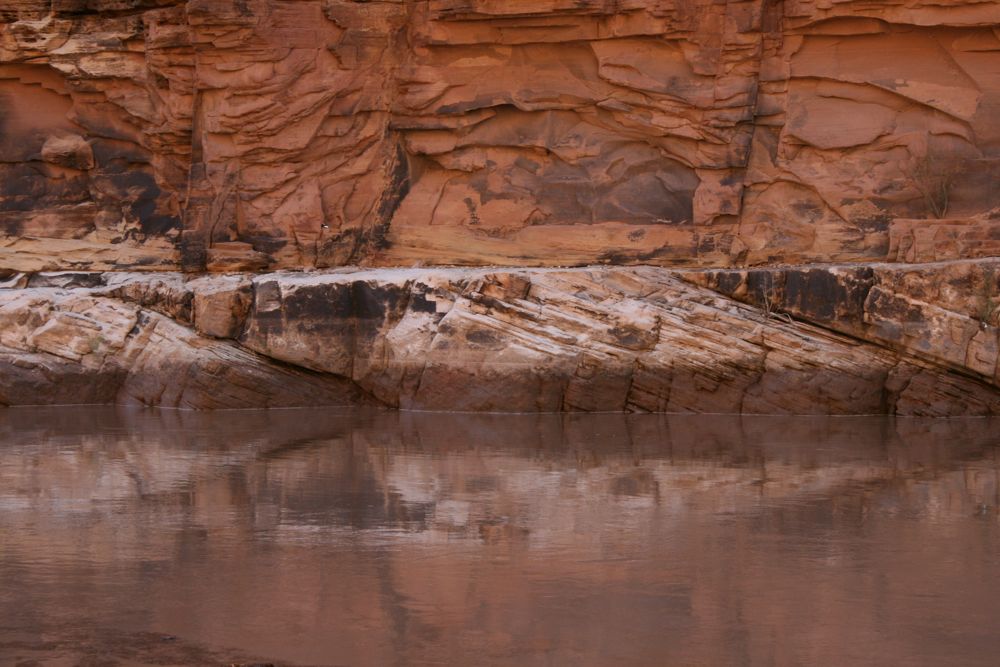“In every outthrust headland, in every curving beach, in every grain of sand there is the story of the earth.”
―Rachel Carson, “Our Ever-Changing Shore”
In part 1, I explained that the Coconino Sandstone poses a serious scientific challenge to young-earth creationist Flood geology. If you think that the Earth was entirely covered by water, and that the sediments of Grand Canyon in particular were laid down during that mighty Flood, then you’re going to have a hard time explaining why some of those sediments—the Coconino Sandstone especially—show every sign of having formed on dry land.

But rather than accept the Coconino as a legitimate challenge to the model of Noah’s Flood, and perhaps rethink whether or not a literal global Flood matters to the importance of the metaphors in this Biblical passage, creationists argue those pesky geologists are all wrong—blinded by “aggressive teaching by uniformitarians,” as Morris puts it—and the Coconino formed underwater, after all. This kind of goalpost-moving reminds me of that Woody Allen film where in order to address the problem of young children, a dictator declares that all children under 16 years of age are now 16 years old. Problem solved! Except that no matter how they deny its significance, creationists cannot get away from the scratchy sands of the Coconino.
One popular creationist tactic: challenge the standard interpretation of the Coconino as an eolian deposit at scientific conferences. Some of the presentations at recent meetings of the Geological Society of America [emphasis mine]:
- The poster “Textural Analysis of the Coconino Sandstone, Chino Point, Arizona” (2010) noted in its abstract that, “The Coconino sandstone is usually recognized as an eolian dune deposit…The results of this study are therefore surprising given the character of modern eolian deposits.”
- In “Textural Trends in the Coconino Sandstone, Central and Northern Arizona, USA,” (2010) the abstract reported: “Results show that the Coconino ranges from being moderately to very poorly sorted in most thin sections and at most locations throughout the width, breadth and thickness of the formation. This is contrary to what has previously been reported in the literature…”
- An upcoming presentation, “‘Ripple Marks,’ ‘Slump Features,’ and ‘Rainprints’ in the Coconino Sandstone Near Ash Fork, Arizona (2014),” seems to cast aspersions on the Coconino as eolian, its abstract noting, “More work must be done to explain these anomalies that appear difficult to reconcile with typical eolian processes.”
In each of these cases, the presenters took issue with standard interpretations of the Coconino. In each case, the presenters intimated the Coconino might have not have formed on dry land after all. And in each case, the presenters were associated with Cedarville University, a Christian school in Ohio whose official doctrinal statement declares, “We believe in the literal six-day account of creation.”
The presence of this work at major geologic conferences did not go unnoticed by Cedarville University’s press department, which declared that the faculty and students had presented “alternate views of how the rocks formed” and demonstrated that the Coconino “was not deposited in a desert, as most believe, but was deposited underwater.”
Well, okay. Posters were presented and people at the conferences saw them. That’s nice for the presenters, but it hardly establishes that their views have prevailed in the scientific community. It’s pretty easy to present a poster at such a conference; there’s minimal critical review, nothing like the scrutiny that a paper submitted to a peer-reviewed scientific research journal receives. How such research will fare in peer-reviewed journals remains to be seen.
Even at the conferences, I doubt that many people who saw the creationist attempts to use the Coconino for their cause understood the context of what was really going on, much less had their minds changed. I don’t think many geologists have any dog in the fight over how the Coconino formed. They might have looked and shrugged.
There’s this funny thing about which rock units get studied in depth by geologists. Let me give you a hint: the reason is similar to the word “toil,” only without the “t.” And for the many geologic questions that do not involve petroleum…well, they can be very interesting questions that deserve research. If only there were funding available.
Research in Grand Canyon is a bit like that. That’s one reason why you don’t see a lot of research—outside of these creationist presentations—dealing with Grand Canyon issues. The irony is that in recent GSA conferences, the creationist work on the Coconino was virtually the only research being presented on Grand Canyon geology. That fact is a bit embarrassing for our field. There are real, fascinating issues in this vast national park that need to be explored, such as the timing of its carving, and the tantalizing clues that the eastern section might have once flowed in the other direction. I would love to see more posters and talks on these issues, and fewer on trivia about the Coconino.
